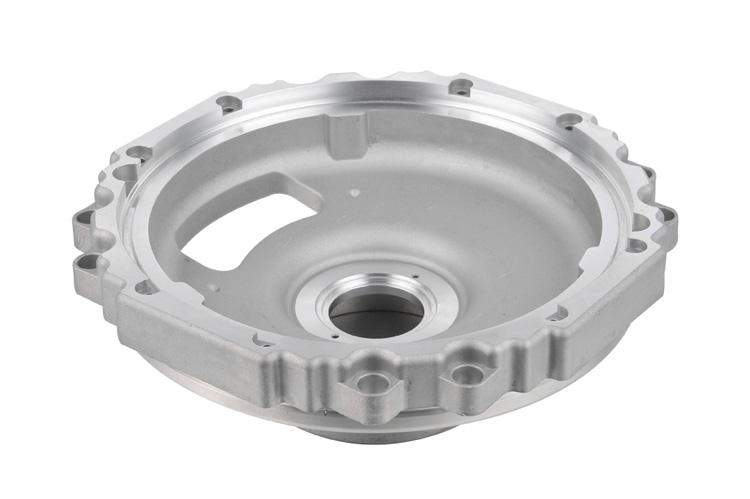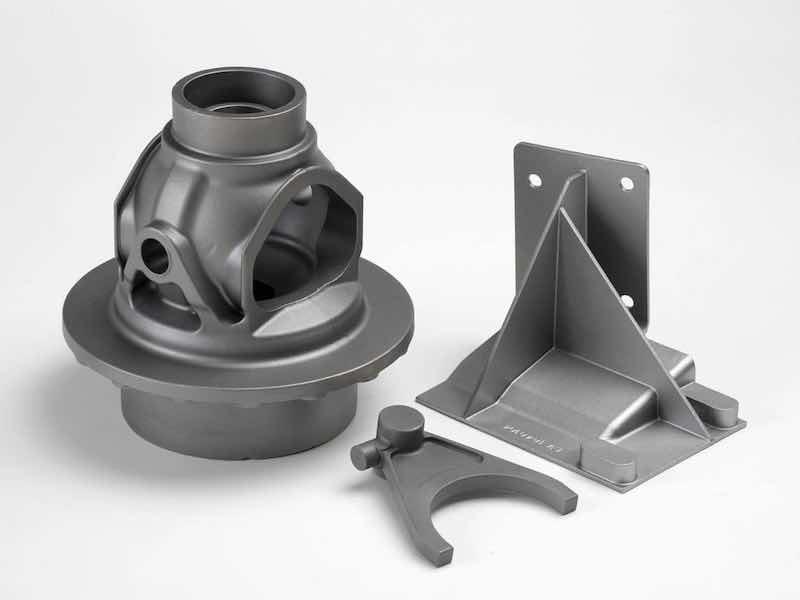Aluminum Foundry and Metal Castings: trusted choices for industrial needs
Exploring the Versatile Makes Use Of and Applications of Light Weight Aluminum Castings in Modern Industries
Light weight aluminum castings have ended up being indispensable to numerous modern markets due to their one-of-a-kind properties. They provide considerable benefits in weight reduction, thermal conductivity, and rust resistance. From automobile developments to applications in durable goods and construction, their flexibility is amazing. Yet, real degree of their effect expands past immediate benefits, meaning more comprehensive ramifications for sustainability and efficiency. What lies ahead for light weight aluminum castings in an ever-evolving industrial landscape?
Automotive Industry Innovations
The automobile sector has significantly welcomed aluminum castings to boost automobile performance and efficiency. By using aluminum, makers can generate lighter components, which add to improved fuel economic climate and minimized discharges. Secret applications consist of engine blocks, transmission situations, and architectural parts, where the product's strength-to-weight ratio supplies sturdiness without adding excess weight.
Aluminum spreadings likewise offer premium thermal conductivity, which assists in far better heat dissipation, therefore improving engine efficiency. Developments in casting innovations, such as die casting and sand spreading, allow the manufacturing of complex geometries, permitting for cutting-edge styles that enhance area and functionality.
The recyclability of light weight aluminum lines up with sustainability goals in the auto sector, advertising environmentally friendly methods. As the sector remains to introduce, the use of light weight aluminum castings is likely to expand, driving additional improvements in car style and performance.
Aerospace Improvements and applications
While the aerospace market proceeds to focus on weight decrease and fuel efficiency, aluminum spreadings have actually become a crucial material selection for different applications. Their lightweight nature, coupled with high strength-to-weight ratios, enables significant improvements in aircraft efficiency and efficiency. Aluminum spreadings are frequently used in architectural components, such as body frames and wing components, where lowering weight is crucial.
Recent innovations in light weight aluminum casting technologies, including enhanced alloy formulations and precision casting strategies, have additionally enhanced the material's performance capabilities. These technologies enable the production of complicated geometries and intricate designs while keeping architectural honesty. Furthermore, light weight aluminum's exceptional deterioration resistance assurances longevity and dependability in harsh aerospace environments.
As the aerospace market increasingly welcomes sustainability, aluminum spreadings use a recyclable option that straightens with environmentally friendly methods, making them an essential element in the advancement of next-generation aircraft.
Consumer Item and Everyday Products
As consumers progressively seek light-weight yet resilient materials for daily items, aluminum castings have actually obtained popularity in numerous durable goods. The one-of-a-kind residential or commercial properties of light weight aluminum, including its resistance to corrosion and exceptional thermal conductivity, make it an ideal selection for items like cookware, household home appliances, and outdoor gear. As an example, light weight aluminum cast pots and pans offer even heat distribution, improving cooking effectiveness. Furthermore, using aluminum in products such as bike frames and baggage assures a balance in between stamina and transportability. Suppliers value aluminum spreadings for their convenience, as they can be quickly formed right into complex forms while preserving structural stability. Moreover, the ability to reuse light weight aluminum without weakening its residential or commercial properties lines up with growing customer choices for lasting products. On the whole, light weight aluminum castings are integral to the production of resilient, functional, and cosmetically pleasing durable goods, fulfilling the needs of modern way of livings.
Construction and Architectural Uses
Light weight aluminum castings have actually ended up being a vital component in building and construction and architectural design, specifically because of their strength and light-weight nature. These homes make aluminum an excellent choice for numerous applications, including architectural elements, exteriors, and decorative attributes - Aluminum Foundry. Engineers and contractors significantly use light weight aluminum castings for window structures, doors, and roofing systems, boosting both functionality and appearances. The material's resistance to rust better extends its life-span, lowering maintenance costs and guaranteeing longevity in varied environmental problems
Furthermore, light weight aluminum can be conveniently molded into detailed designs, permitting for innovative building expressions. Its flexibility promotes the creation of customized pieces that satisfy certain layout demands, from ornate railings to complicated supports. As sustainability ends up being a concern, light weight aluminum's recyclability contributes to its allure in eco-friendly building methods. In general, aluminum castings are transforming the building market by offering lightweight, resilient, and visually appealing services.
Digital and electric Parts
Aluminum castings play a vital function in the production of light-weight electric rooms, which improve transportability and effectiveness in different applications. In addition, their excellent thermal conductivity makes them ideal for warmth sinks, making certain peak efficiency and durability of electronic components. Aluminum's conductive properties add to its use in numerous electrical conductors, emphasizing its relevance in contemporary technology.
Light-weight Electrical Units
Lightweight electrical rooms play an important duty in securing sensitive digital components from ecological factors and physical damage. Constructed from light weight aluminum castings, these rooms are valued for their strength-to-weight ratio, making them suitable for various applications throughout industries. Their light-weight nature help in minimizing overall system weight, which is crucial in mobile and mobile electronics. Additionally, light weight aluminum's corrosion resistance boosts toughness, prolonging the lifespan of the encased components. The ability to mold light weight aluminum right into complex shapes enables tailored designs, satisfying certain needs while making certain effective warm dissipation. In addition, these units can be easily integrated right into existing systems, providing adaptability and versatility in modern technological environments. Overall, lightweight aluminum rooms substantially add to the efficiency of electronic devices.
Heat Sinks and Conductors
While numerous materials are utilized in digital parts, light weight aluminum spreadings stand out for their effectiveness in heat management as heat sinks and conductors. Their outstanding thermal conductivity permits effective warm dissipation, which is important in stopping the overheating of electronic devices. Aluminum's lightweight nature additionally improves its viability for applications where weight is a considerable aspect, such as in aerospace and vehicle industries. Furthermore, aluminum castings can be easily built right into complicated shapes, giving layout versatility for enhancing thermal performance. The corrosion resistance of light weight aluminum likewise adds to the longevity and reliability of these components in numerous atmospheres. As innovation advancements and devices come to be much more small, the demand for effective warmth administration solutions, like light weight aluminum castings, remains to expand.
Marine Market Utilization
The aquatic market increasingly counts on aluminum spreadings for their phenomenal toughness and deterioration resistance. These residential or commercial properties make aluminum a perfect option for various applications, consisting of watercraft hulls, engine parts, and aquatic equipment. The light-weight nature of aluminum castings enables boosted fuel performance and much easier maneuverability in boat, which is important for both industrial and recreational vessels.

Light weight aluminum spreadings additionally give considerable expense advantages because of their long life expectancy and low maintenance requirements, reducing the total operational expenditures for marine drivers. Additionally, the convenience of aluminum permits for complex layouts that can satisfy details performance needs.
Producers in the aquatic industry make use of advanced spreading techniques to create intricate shapes, making sure that components fulfill rigorous security and efficiency standards. As the demand for high-performance aquatic vessels grows, aluminum spreadings are placed as a vital material in improving the capability and durability of aquatic equipment.
Sustainability and Recycling in Aluminum Spreading

Light Weight Aluminum Recycling Process
Recycling light weight aluminum plays a necessary role in reducing environmental influence and saving sources within the spreading industry. The light weight aluminum reusing process starts with the collection of scrap aluminum, which can consist of old elements, manufacturing waste, and post-consumer items. This scrap is after that arranged, cleaned, and shredded into tiny pieces to help with melting.
When prepared, the light weight aluminum scrap is thawed in a furnace at lower temperatures than main light weight aluminum production, considerably lowering power try this web-site intake. The molten light weight aluminum is then cast into ingots or other shapes for reuse in various applications - Aluminum Foundry. This closed-loop system permits for the reliable recuperation of aluminum, preserving its residential properties while lowering the demand for virgin products. Subsequently, the reusing procedure is a critical part of lasting practices in light weight aluminum spreading
Ecological Benefits
While aluminum spreading plays a crucial duty in numerous sectors, its ecological advantages are especially amazing concerning sustainability and resource preservation. The light-weight nature of aluminum adds to power performance in transport, decreasing fuel intake and discharges. Additionally, light weight aluminum spreading helps with the use of recycled products, significantly lowering the power required for production contrasted to main aluminum. This reusing process decreases waste and lessens the ecological effect associated with mining and refining resources. Additionally, aluminum is 100% recyclable without destruction of its residential properties, promoting a lasting lifecycle. By selecting light weight aluminum casting, sectors can significantly reduce their carbon footprint while advertising resource effectiveness, making it an essential option in the pursuit of ecologically pleasant manufacturing techniques.
Closed-Loop Systems

Often Asked Questions
What Are the Trick Advantages of Aluminum Castings Over Various Other Products?
Light weight aluminum spreadings offer lightweight homes, superb corrosion resistance, and high strength-to-weight ratios. They can be easily molded into complex shapes, offer great thermal and electric conductivity, and are cost-efficient, making them preferable over many alternative materials.
How Is the Aluminum Casting Refine Environmentally Pleasant?
The light weight aluminum spreading procedure is eco-friendly as a result of its recyclability, reduced power usage, and minimized waste manufacturing. Its capacity to make use of recycled products lessens the carbon impact, promoting sustainability within producing practices.
What Are Common Challenges in Light Weight Aluminum Spreading Manufacturing?
Typical difficulties in aluminum casting manufacturing consist of preserving dimensional accuracy, managing thermal tightening, protecting against flaws like porosity and inclusions, guaranteeing proper check mold and mildew style, her response and enhancing production performance while lessening material waste and environmental influence.
Exactly How Do Aluminum Castings Compare in Price With Various Other Manufacturing Approaches?
Aluminum castings commonly use competitive prices compared to various other producing methods, specifically for medium to high-volume manufacturing. Their lower initial tooling expenditures and efficient product use can cause desirable economics in time.
What Future Fads Are Anticipated in Aluminum Casting Technology?
Future patterns in light weight aluminum casting modern technology are expected to include improvements in automation, enhanced alloy make-ups, enhanced reusing methods, and the combination of 3D printing, all focused on boosting efficiency, minimizing prices, and minimizing ecological influence.
Recent improvements in aluminum casting modern technologies, including enhanced alloy solutions and accuracy casting techniques, have actually further boosted the material's efficiency abilities. Light weight aluminum spreadings have actually come to be an important component in building and architectural design, especially due to their toughness and light-weight nature. The light weight aluminum reusing procedure starts with the collection of scrap light weight aluminum, which can consist of old parts, making waste, and post-consumer items. Once prepared, the aluminum scrap is melted in a heater at reduced temperature levels than primary aluminum production, significantly reducing energy usage. Furthermore, light weight aluminum spreading facilitates the use of recycled materials, significantly reducing the energy required for production compared to primary aluminum.